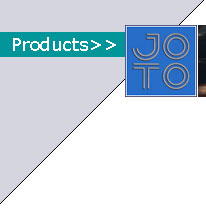THE
WORLD CLASS ABRASIVE PRODUCTS
INTRODUCTION
>>
DEFINITION
OF GRINDING WHEEL :
A grinding wheel is a precision tool with thousands of cutting points. It consists
of abrasive grains held in a matrix of bond and separated by pores. The abrasive
grains are the cutting points while the purpose of the bond is to hold the individual
grains together. The pores (hollow spaces between adjacent abrasive grains and
the bond) serve to provide clearance for coolant penetration and metal chips
removed in the grinding process.
Increasing the amount of bond in the wheel increase the thickness of the bond
bridges and reduces the size of pores separating each abrasive grain. This increases
the strength of the bond bridges and the rigidity with which the grains are
held. This changes the grade of the wheel.
WORKING PRINCIPLE OF JOTO GRINDING WHEEL :
When the wheel is rotated at grinding speed and applied to the work piece, the
abrasive grains cut the material that is being ground, removing the material
in small chips.
Under the action of forces improved during grinding, the abrasive cutting points
are worn flat, resulting in the points becoming blunt. This causes an increase
in friction, heat built up and the forces imposed on the wheel. The increase
in grinding forces causes either the abrasive to fracture, exposing new cutting
edges, or fractures the bond bridges holding the abrasive grains. In the latter
case fresh abrasive grains are exposed to cut the work piece. If the surface
finish and geometry of the work piece remain within required tolerances, the
grinding wheel is then said to be self-dressing or self-sharpening. Normally
vitrified grinding wheel is not self-dressing and it is to be dressed.



